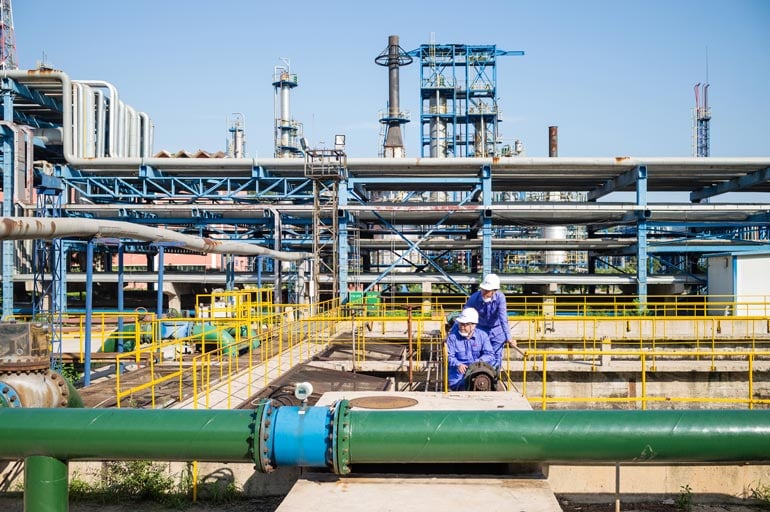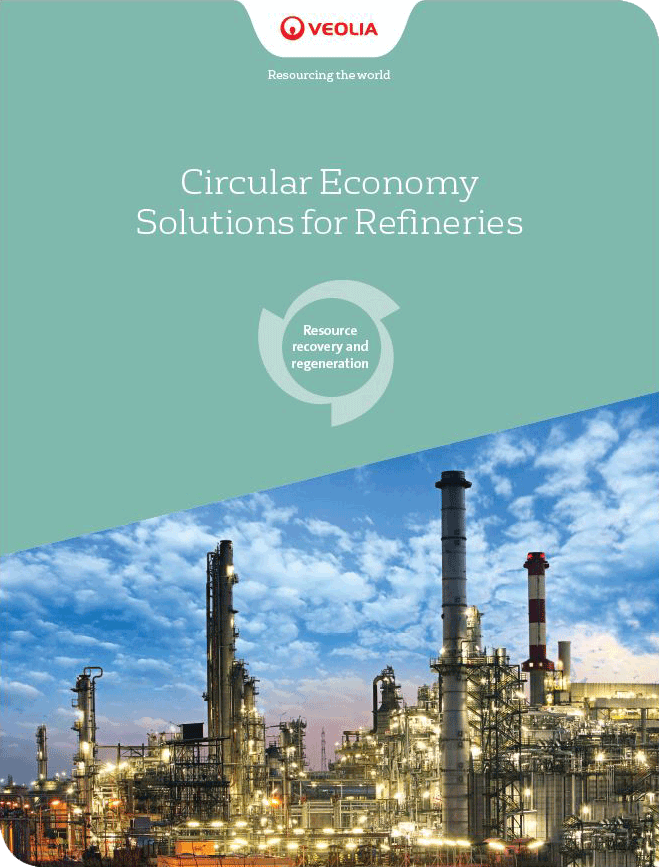In the wake of Chevron’s acquisition announcement of Renewable Energy Group last week, questions about the energy transition come to the forefront. Which fuels will prevail? Who will the players be?
As the US works toward ecological transformation, managing by-products and resources used in renewable fuel production is critical.
In the case of many oil and gas companies, renewable diesel is an interesting opportunity to participate in the energy transition through diversification of their energy portfolio. Yet, with looming questions of long-term feedstock supply and production sustainability, global energy supply is not a simple issue to solve. Renewable fuel alternatives, their chemical makeup, and the overall footprint implications can be complicated.
As the world progresses through the energy transition and tries a variety of renewable fuel options — from electric vehicles to wind and solar — there is one that actually leverages some of the existing energy infrastructure in the US. And, it's clean.
Renewable diesel is on the rise
The U.S. Energy Information Administration (EIA) forecasts that renewable diesel production capacity will reach 330,000 barrels per day in 2024, compared to 38,000 barrels per day in 2020.
The force behind this growth includes state and federal incentives for producers, the public’s demand for an energy transition from fossil fuels to more environmentally friendly, renewable fuels, and the increased importance that environmental, social, and governance (ESG) has in the eyes of investors and major banks.
As existing refineries and new producers rush to fill the demand and take advantage of incentives, the rapid expansion of renewable diesel is not without its challenges. Issues like feedstock supply, wastewater treatment, public trust and image, and converting or building new infrastructure are all issues that producers will need to tackle.
But before we examine these challenges, let’s first understand renewable diesel.
What is renewable diesel?
Renewable diesel is produced by converting cooking oil, animal fat, and other waste products into a renewable fuel. Its primary benefits are that it doesn’t rely on fossil fuels, and it burns cleaner than both fossil fuel based diesel and biodiesel. Also, renewable diesel is chemically identical to petroleum diesel and has better performance characteristics in vehicles and other machines. This is why renewable diesel is specifically such an attractive alternative in the energy transition.
The cetane rating of renewable diesel is between 75 and 90 versus 48 to 52 for petroleum diesel, which means that renewable diesel burns more completely — and therefore cleaner — than petroleum diesel.
However, the EIA projects that renewable diesel will only make up about 5% of U.S. diesel production capacity by 2024. Production is expanding, but it is still far outpaced by fossil fuels. The infrastructure for renewable diesel production and distribution is largely available, but producers need to overcome the challenges to increase capacity in order to expand at more rapid pace.
Who are the current major players
Several energy producers have fully embraced the energy transition’s demand for renewable diesel and are quickly ramping up production.
- Neste
- Renewable Energy Group
- Marathon Petroleum Company
- Diamond Green Diesel
- Heartwell Renewables
- Phillips 66
These companies are constructing new infrastructure, converting existing refineries, and aggressively planning to increase production of sustainable fuels.

Current refineries already possess the extensive production and distribution infrastructure required for renewable diesel. This existing infrastructure gives them a huge advantage to play an active role in the US energy transition. This fuel uses the same hydrotreating and separation processes needed for fossil diesel, and it is compatible with modern diesel engines, so could replace petroleum diesel in existing fuel pumps.
So, what’s holding them and other producers back?
6 renewable diesel production challenges
Many major energy producers have fully embraced renewable diesel and are quickly ramping up production: constructing new infrastructure, converting existing refineries, and aggressively planning to increase production of sustainable fuels.
So, what’s holding them and other producers back? Let's look at the four primary challenges we're seeing in the market.
1. Feedstock procurement
As the production of renewable diesel has increased, the demand for its necessary feedstocks has skyrocketed. As of February 2021, the price of used cooking oil is up about 50% compared to 2020, while the price of cattle and sheep fat products are up more than 30%. The demand for oilseeds like soybeans and canola has also expanded as renewable diesel producers search for sources of feedstocks other than byproducts or waste.
The immediate result will be increased agricultural output and higher prices, including food prices, while the long- term solution will be to find a sufficient source of sustainable feedstocks.
2. Wastewater treatment
Although both fossil and renewable diesel refining produce wastewater, renewable diesel poses some unique issues.
Because of the competition for feedstocks, renewable diesel refineries will often accept residual oils with high levels of contaminants. Once these contaminants are filtered out, the resulting wastewater can have exceptionally high concentrations. These can range from 40,000 to 100,000 mg/L chemical oxygen demand (COD) and 1,000 to 10,000 mg/L total suspended solids (TSS), as well as emulsified oils and a low pH level.
Because of these high concentrations, existing wastewater treatment facilities can become overwhelmed, as they were not built to process material of this nature. Refiners will have to take a fresh look at the way they use and reuse water onsite making sure that they don’t overload existing equipment and are using resources as efficiently as possible.
3. Waste treatment
The purification process in the pretreatment generates spent bleaching clay, which contains contaminated oil, water, and solids. Evacuating those solids to a non-hazardous landfill can be dangerous because of self-ignition during transportation.
Additionally, the oil content will degrade to methane (CH4 ) in the landfill that will increase a refinery's greenhouse gas footprint. CH4 emission has a carbon footprint 25 times higher than CO2.
The solution to these issues would be to thermally treat the waste to separate the liquid part, and then using anaerobic treatment to treat the liquid. This method would reduce the volume of waste stored in landfill by 40% to 60%.
4. Finding the right place to produce renewable diesel
Determining the best state or region to develop or convert their infrastructure is complicated. It makes the most financial sense to produce renewable diesel in states that offer tax credits, but only a handful of states, like California and Oregon, currently offer them.
Producers also have to choose a location with sufficient resources to handle the operation. For example, even though renewable diesel is a step in the right direction for the energy transition, it still takes a lot of water to create renewable diesel. Those needs could be a problem where water is scarce, like in the U.S. Southwest. Producers should consider a proactive approach, implementing water reuse loops as they build out their production facilities.
All four of these challenges are faced by every type of renewable diesel producer. And, if handled incorrectly, it could cause new or worsen existing environmental and social problems.
5. Converting facilities
Despite the fact that renewable and fossil diesel are chemically very similar and utilize the same basic infrastructure, there are some steps that refineries need to take to ensure their facilities are suitable for renewable diesel production.
Hydrotreating renewable diesel releases considerably more heat than with petroleum, so hydrotreaters need to be equipped with high liquid product recycle capacities to absorb the heat and emergency depressurization systems. Renewable diesel production also requires more hydrogen than fossil diesel, so most refineries will require increased availability of hydrogen.
6. Reputation
Most major refining companies have brands strongly associated with fossil fuels. That brand recognition can be a liability for organizations attempting to transition to renewable fuels. They will have to gain the trust of the public and investors and prove they are committed to sustainability if they are going to be successful in their new direction.
Challenges faced by new producers
The largest challenge for new producers to overcome is building new infrastructure quickly enough so they are not eclipsed by existing refineries making a faster transition. Building a new facility can take twice as long as converting an existing refinery for renewable diesel. Those who are first to market will be poised to take advantage of a larger share of state and federal incentives and fuel credits. Once the market is more saturated, those incentives may decline.
The challenge, then, is to develop the new infrastructure, equipment, and distribution networks quickly enough, so that the market is not completely filled with former petroleum producers turned renewable diesel producers.
The solution: focus on ESG
A strong emphasis on environmental, social, and governance (ESG) is the key to overcoming all of the challenges faced by existing refineries and new producers.

As tax policy and regulation changes around carbon footprint and energy production, it can be challenging to remain committed to pure sustainability goals. Converting and building facilities, effectively treating wastewater and waste, and developing sustainable feedstocks all require a significant investment. But investors want to see companies taking the initiative when it comes to the environment and social issues.
According to Bloomberg, from January through May 2021, there were $52 billion dollars in U.S. loans that had terms tied to ESG policies and targets.
Receiving tax credits is also critical for renewable diesel producers, which means being more environmentally friendly. For example, treating liquid waste from the refining process anaerobically will reduce CH4 emissions, energy use, and transportation needs to landfills. This solution would reduce the carbon footprint of producers, giving them more access to tax credits.
Obtaining the resources that producers need to be successful means making a full commitment to supporting the energy transition and reducing environmental impact. Each step of the renewable diesel process must be completed with that goal in mind.
All of the challenges mentioned are connected: success in the energy transition requires continuous investment. This ties to an improved reputation, which is created by responsible and sustainable treatment of waste and procurement of feedstocks. The process ultimately focuses on ESG benchmarks.
How to move forward with renewable diesel
This new wave of energy transformation is opening innovative opportunities for cleaner, more sustainable energy and fuels. To ensure that refineries can complete the switch to renewable diesel production in the cleanest way possible, they can partner with environmental experts to manage resulting changes in material flows. Specifically with wastewater, there is an opportunity to reduce the environmental footprint even further by addressing these changes and implementing water reuse systems onsite.
Strategic partnerships will help companies meet ESG goals, which will lead to further investment and more resources to overcome additional challenges. In this moment of major change for refineries, the ones who implement positive environmental impact programs the most aggressively will prevail.


